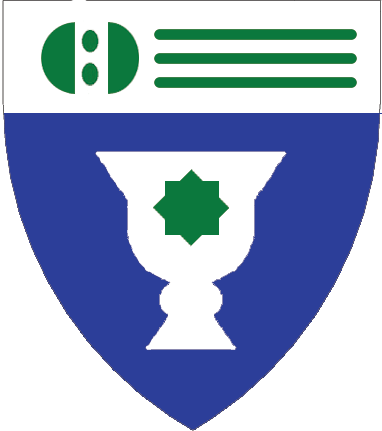 |
||||
 |
Part One: Mariam’s Parents
Mariam’s father, Abu Hazim ibn ‘Umar ibn Jalid ibn Abbad al-Sayyid, was the son of a famous shipwright and trader in Istanbul. After learning portions of the family business in Istanbul, Abu Hazim’s father sent him on an outbound vessel sailing for Malaga on the Iberian peninsula. Abu Hazim quickly discovered, however, that life at sea was not for him. It was not for him so much, in fact, that he forced the ship to dock early in Cartagena. Despite the Captain’s warnings that the lands of Castile & Leon were completely unfriendly toward Arabs and Muslims, Abu Hazim refused to come aboard the ship again. Stranded in a foreign and unfriendly land, Abu Hazim began working his way down the coast to the remnants of the Muslim empire in Granada. On his travels, he would pick up curious pieces of driftwood and carve very small, detailed designs into them to pass time. Once in Malaga, Abu Hazim, knowing full well that his father regularly sent ships to this city, began called himself Hazim and told those who asked that his grandparents were killed when La Higuera was taken in 1431. His parents were forced to convert and change their names, and he was raised mostly Catholic. Anyone who heard him speak Arabic or Catalàn, however, could tell he was not from the peninsula. Hazim gained the nickname 'Al-barrani', meaning foreigner. Hazim found work with a carpenter, Ziyad ibn Rashid al-Qurtubi, where he discovered that building furniture was far easier than building ships with his father back in Istanbul. His employer saw some of Hazim’s carvings – curiously, he never carved people or animals - and soon he went from building furniture to becoming a celebrated artisan in both carvings and inlaid work. As Hazim’s fame grew, so did his wealth – beyond even that of his employer. Ziyad ibn Rashid al-Qurtubi, who, if nothing else knew a good thing when he saw it, married his young daughter, Khadija bint Ziyad ibn Rashid al-Qurtubi to Hazim Al-Barrani, previously known as Abu Hazim ibn ‘Umar ibn Jalid ibn Abbad al-Sayyid (ha! made you read Arabic!). Less than a year later, Maryam bint Hazim Al-Barrani was born. After years of border wars with the Catholics to the north, the forces of Ferdinand and Isabella began marching through the kingdom of Granada, taking villages, forcing Muslims and Jews to convert, and killing all who refused. Refugees began appearing in Malaga looking for ships to take them to Tunis, Tripoli, or Alexandria. Hazim, remembering his hard journey through Castile-Leon years before, had always feared this day would come. He and Khadija sold off most of their belongings and hired a Catholic woman on a pilgrimage to take five year old Maryam north to Cordoba, once the proud capital of Al-Andalus and now near the heart of Catholic Spain, and place her in a convent. Part Two: Mariam’s Upbringing and Escape! Hazim and Khadija’s plan worked. Maryam was young enough when she left Malaga that she didn’t remember much about her parents or how to speak Arabic. The nuns changed the spelling of her name to the more-Catalàn “Mariam Albarran” and educated her thoroughly in geography, reading, writing, history, numbers, and various arts. At fourteen, Mariam had not yet taken her vows as nun and the thought of spending the rest of her life at the landlocked, cloistered convent was beginning to worry her. She remembered living near the sea with her parents, surrounded by beautiful gardens, tracing mazes carved into tabletops with her finger, and running to her father when he entered the garden calling out for habibi. She didn’t know where that was, or what had happened to her parents – whenever she asked, the nuns would shake their heads and turn away. Resolved to find out some kind of truth, to see the world, and to have some adventures - like in the legends of El Cid – Mariam began wandering the convent, picking up any odd coin, jewel, or trinket. She found it easy to distract the nuns by asking questions and drawing their attention away while she pilfered the silverware, daggers, and simple jewelry left lying about. When her satchel was as heavy as she could bear, Mariam left one night, climbing the tree by the wall. She resolved to head south and east, to the Mediterranean Sea, stopping in small villages to trade items for food and often wool rovings, which she would spin while she walked. The spun wool she would sell in the next town, or knit into socks as she continued her journey. Mariam found herself performing all kinds of odd jobs while she traveled, occasionally staying in one town for months at a time and building up funds to continue on her way. Part Three: Mariam Joins the White Star Coming Soon!
|
|||
|
Site design & maintenance by the goode ship White Star
|
||||
